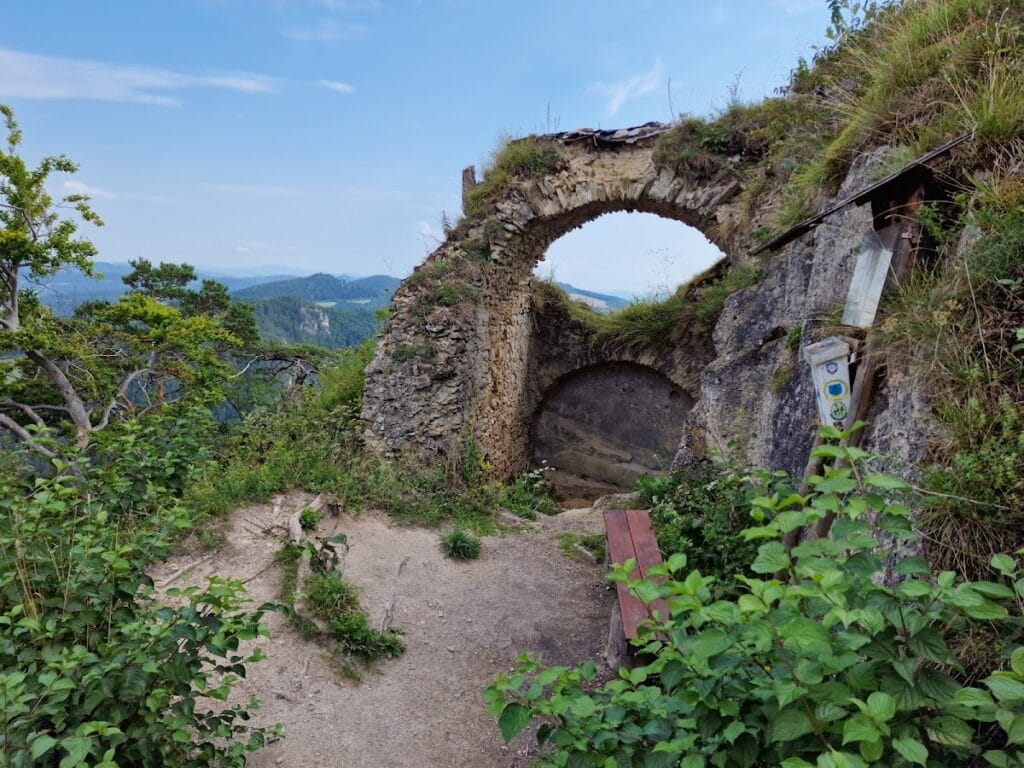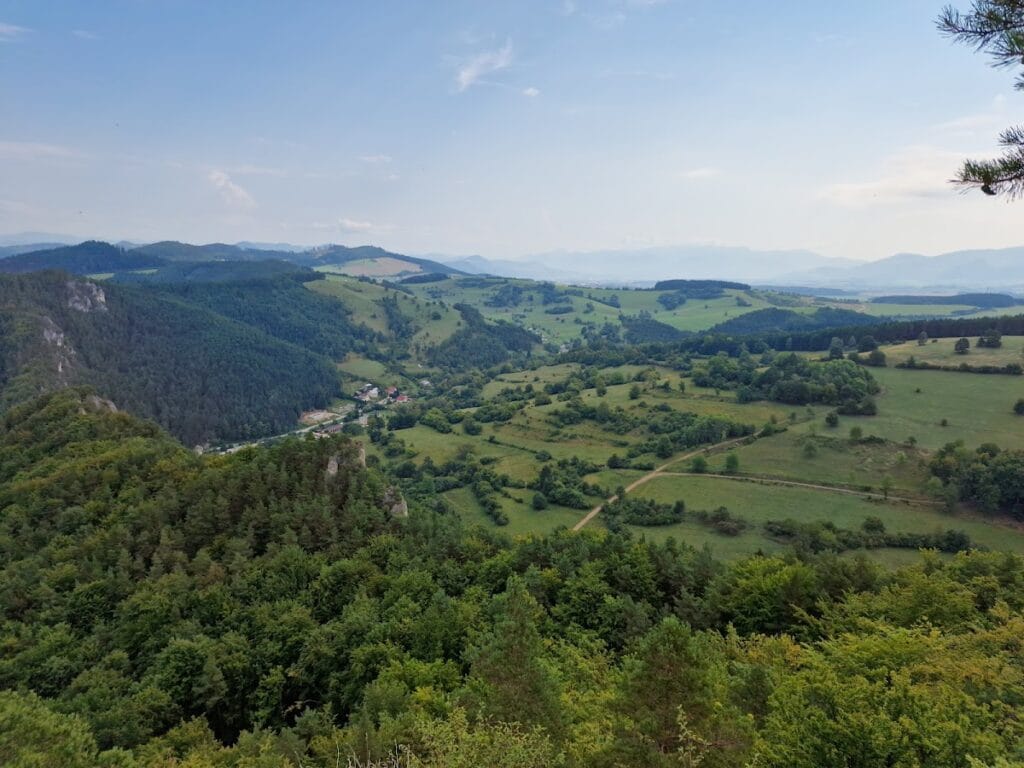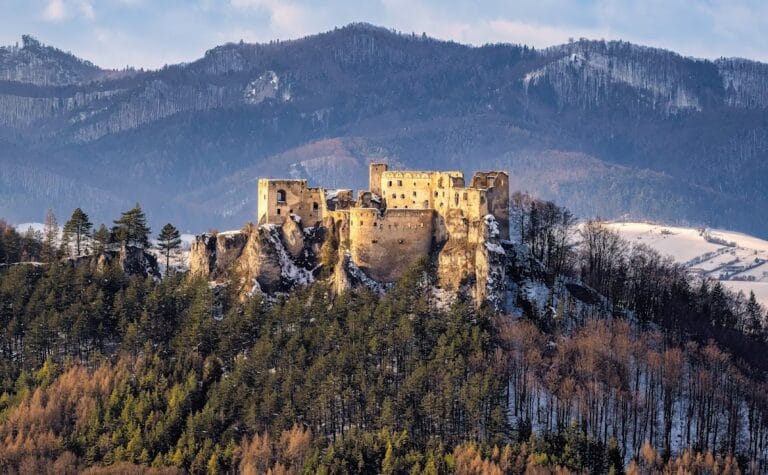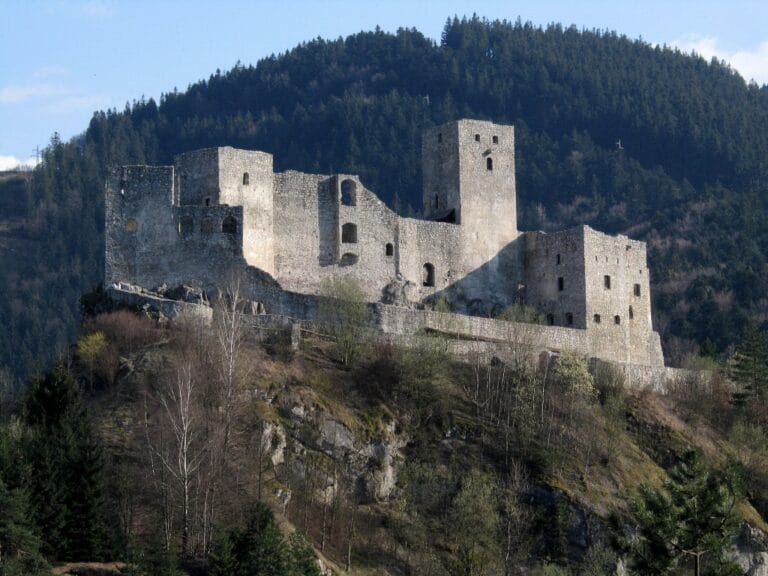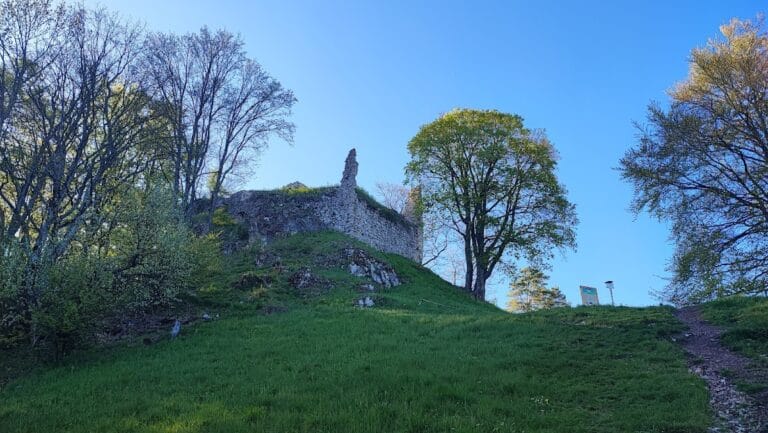Hričov Castle: A Historic Medieval Fortress in Slovakia
Visitor Information
Google Rating: 4.8
Popularity: Low
Google Maps: View on Google Maps
Official Website: www.hradhricov.sk
Country: Slovakia
Civilization: Unclassified
Remains: Military
History
Hričov Castle stands above the village of Hričovské Podhradie in present-day Slovakia. The site was originally fortified during prehistoric times and continued to hold importance through the Great Moravian period. The castle itself was most likely built soon after the Mongol invasion of Hungary in the mid-13th century, with the first known written reference to “castrum Hrichou” appearing in 1265.
The castle’s early history is closely tied to the Bishopric of Nitra, which held the surrounding lands in the early 13th century. King Béla IV granted the castle and its estates to a noble named magister Toluš in 1254, who is credited as its builder. After Toluš’s death, ownership passed through various hands, including Mikuláš Beycha and later the Balaš family, who secured control by the early 1280s. Around the turn of the 14th century, Hričov was taken by force in a siege led by the influential regional lord Matúš Čak. Upon Čak’s death in 1321, the Balaš family regained the castle.
From the middle of the 14th century onward, the castle returned to royal ownership, often being pledged or granted to noble families or royal officials. Among these were the Kapolai family in 1392, Sudivoj of Ostroróg a few years later, and Queen Barbara of Cilli in 1424, whose appointed steward managed the estate. The castle saw military action during the 1440s when Hussite forces occupied it under the command of Svidrigal. By the 1460s, supporters of King Matthias Corvinus controlled the fortress, with František Hági obtaining it as a pledge and Blažj Mađar taking it for him.
In 1468, Blažj Podmanický was granted Hričov by royal donation and officially became its lord the following year. Under the Podmanický family, the castle’s domain included several nearby villages such as Dolný and Horný Hričov and Hričovské Podhradie. After Blažj’s death, disputes over ownership involved various claimants and the Bishopric of Nitra, drawing the attention of Palatine Štefan Zápoľský. In 1500, King Vladislav II exchanged the castle and its lands to Michal Imrefy for a property in Transylvania.
The Imrefy family’s tenure saw financial difficulties resulting in the mortgaging of parts of the estate in 1518. During the conflict between John Zápolya and Ferdinand I, Hričov was taken by German troops under General Ján Katzianer in 1527. Katzianer installed a new commander, Gašpar Dominith. In 1536, brothers Ján and Rafael Podmanický reclaimed the castle, with King John Zápolya confirming their ownership. A prolonged lawsuit between the Podmanický and Imrefy families followed, ultimately settling in 1556 when the Podmanický lineage paid a substantial sum to the Imrefy family.
Following Rafael Podmanický’s death in 1558, the castle briefly came under royal administration and was granted to Anna Likarka, widow of Gašpar Horváth of Wingart. During her stewardship, Ján Kilian from Milan maintained the fortress. In 1563, František Thurzo acquired Hričov and integrated it into his estate based in Bytča. The Thurzo family managed the castle through the late 16th century, but by the early 17th century, it saw little defense and suffered damage during raids by hajduks serving Stephen Bocskai.
The Thurzo family preferred other, more accessible strongholds such as Lietava Castle. As a result, Hričov was neglected, leading to its progressive decline over the 1600s. A 1686 engraving by Dutch artist Justus van der Nypoort shows the castle still largely intact at that time. However, later in the century it was struck by lightning and severely damaged. Without repairs, the fortress gradually fell into ruin. Today, the remains of Hričov Castle are protected as a cultural monument, bearing witness to centuries of regional history.
Remains
Hričov Castle occupies a rocky hill rising 567 meters above the surrounding landscape in the Súľovské vrchy mountains. The site benefits from natural defenses and is one of several ancient fortified locations that have been used since prehistoric times. Archaeological evidence confirms that earth ramparts constructed during the Great Moravian period survived into the 12th and early 13th centuries, indicating the area was of strategic importance well before the stone castle was built.
The castle complex was dominated by two main towers, each rising two stories. One tower was notable for its circular ground plan, a shape often chosen for its defensive advantages. Both towers retained their roofs with only minor damage visible as recently as the late 17th century, suggesting care was taken to maintain these structures during that period. The residential palace, separate from the towers, was a multi-story building that showed heavier damage, including the loss of its roof and parts of its walls.
A detailed 1686 engraving provides valuable insight into the castle’s design, depicting the southeastern facade adorned with 32 windows. This large number indicates a substantial manor house component within the fortress, likely containing numerous rooms for noble residents and staff. At that time, the castle had a spacious layout combining habitation and defense.
Records from 1563 highlight the castle’s functional areas through a land grant requiring a local craftsman to perform locksmith and blacksmith duties on site. This implies the castle contained metalworking workshops or facilities needed for repairs and the maintenance of weapons and equipment.
While later centuries saw the castle deteriorate due to neglect and natural disasters such as lightning strikes, much of the stone construction remains in situ. These ruins continue to mark the site of one of the region’s medieval strongholds. The earthworks south of the main complex additionally preserve traces of earlier attempts to fortify the ridge, linking the castle’s origins to ancient defensive traditions. Overall, the surviving remains demonstrate a multi-phase occupation combining military, residential, and industrial functions across many centuries.


